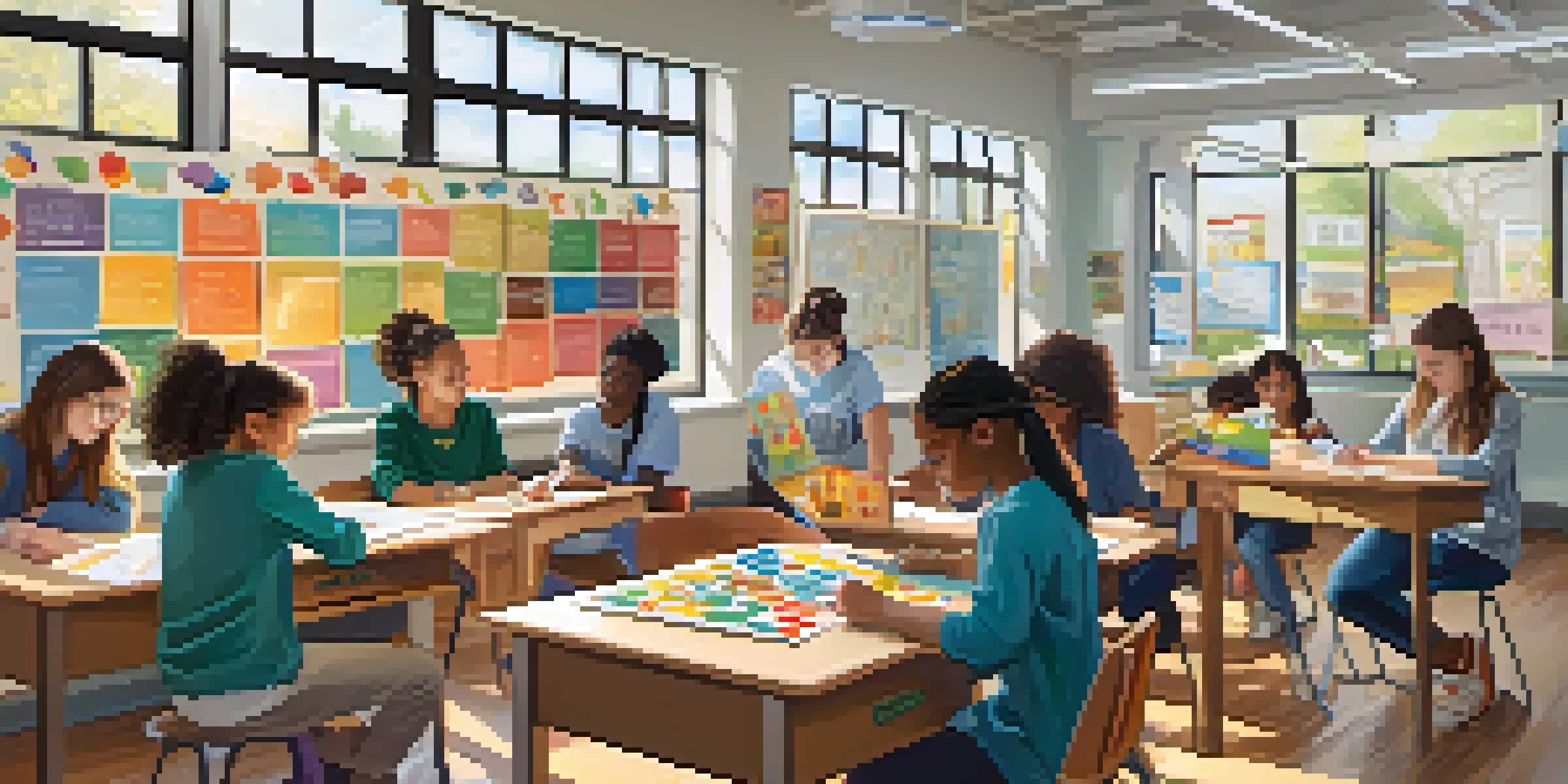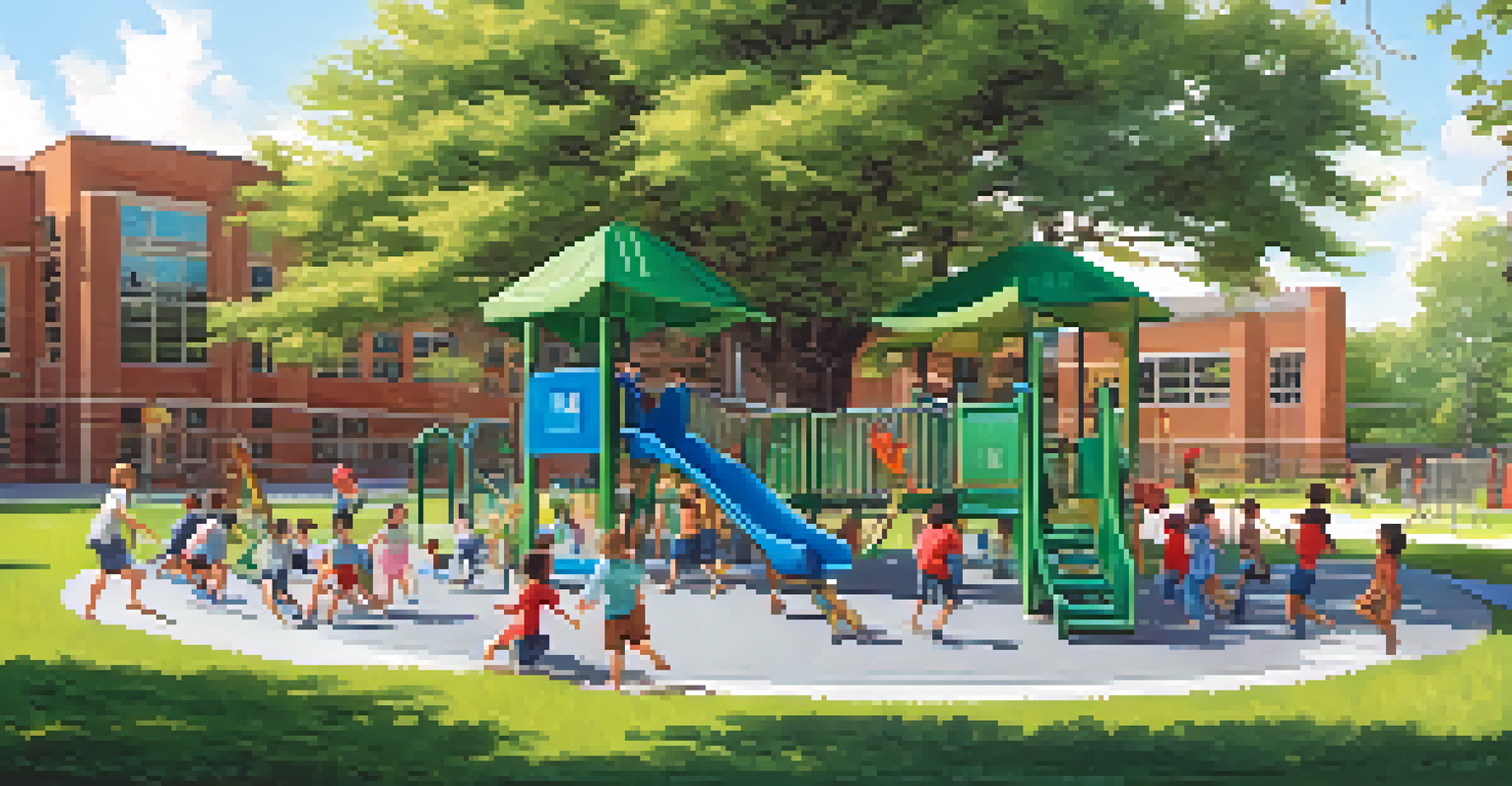Creating Safe Learning Environments for Pathway Success

Understanding the Importance of Safe Learning Spaces
Creating a safe learning environment is crucial for student success. When students feel secure, both emotionally and physically, they are more likely to engage actively in their education. This sense of safety can lead to improved focus, higher attendance rates, and overall better academic performance.
The best way to predict the future is to create it.
Think of a safe learning environment like a nurturing garden. Just as plants thrive when they have the right conditions—adequate sunlight, water, and care—students flourish when they are in a supportive and secure space. This is where they can explore ideas and take risks without fear of judgment.
Moreover, a safe learning environment helps in building strong relationships between students and educators. When students trust their teachers and feel respected, they are more willing to share their thoughts and challenges, fostering a collaborative atmosphere that enhances learning.
Establishing Clear Guidelines and Expectations
One fundamental aspect of safety in learning environments is having clear guidelines and expectations. When students understand what is expected of them, they can navigate their learning journey with confidence. Clear rules help to minimize misunderstandings and create a structured atmosphere.

Imagine a game without rules; it would be chaotic and confusing. In a similar way, when students know the boundaries and the framework of their learning environment, they can engage more meaningfully. Consistent expectations also contribute to a sense of fairness, which is essential for a healthy classroom dynamic.
Importance of Safe Learning Spaces
Creating a nurturing environment fosters student engagement and enhances academic success.
Additionally, involving students in the creation of these guidelines can foster a sense of ownership and responsibility. When students contribute to the rules, they are more likely to adhere to them, creating a cooperative and respectful learning community.
Promoting Emotional Safety and Well-being
Emotional safety is just as important as physical safety in learning environments. Students need to feel that they can express their thoughts and feelings without fear of ridicule or punishment. This emotional security allows for open discussions and can significantly enhance their learning experience.
Education is the most powerful weapon which you can use to change the world.
Consider the idea of a support network; just like we seek support from friends during tough times, students also need a safety net in their educational settings. Providing outlets such as counseling services and peer support groups encourages students to seek help and share their struggles.
Creating an emotionally safe environment can also be achieved by encouraging empathy among students. Activities that promote understanding and kindness can help students connect on a deeper level, leading to a more harmonious classroom atmosphere where everyone feels valued.
Utilizing Engaging and Inclusive Teaching Practices
Engaging and inclusive teaching practices are vital for creating a safe learning environment. When educators employ diverse teaching methods, they cater to various learning styles, making sure that every student feels included and valued. This can also prevent feelings of isolation among students.
Think of a classroom as a stage where every student is a performer. If only a few students are given the spotlight, others may feel overlooked. By incorporating group activities, discussions, and hands-on learning, teachers can ensure that every student has a chance to shine.
Clear Guidelines Enhance Confidence
Establishing clear rules helps students navigate their learning journey with confidence and fairness.
Moreover, inclusive practices help to celebrate diversity and foster a sense of community. When students see their backgrounds and experiences reflected in the curriculum, they are more likely to feel a sense of belonging, which is crucial for their overall success.
Encouraging Positive Relationships Among Students
Building positive relationships among students is essential for a safe learning environment. When students support each other, they create a sense of camaraderie that enhances their overall educational experience. This support can lead to improved collaboration and teamwork, skills that are invaluable in and out of the classroom.
Consider the power of a team; when individuals work together towards a common goal, they often achieve more than they could alone. Encouraging group projects and peer mentoring can help students form these bonds, making the classroom a more inviting place.
Additionally, fostering respect and kindness among peers can reduce instances of bullying and conflict. When students learn to appreciate each other's strengths and differences, they contribute to a positive classroom culture that supports everyone’s growth.
Creating a Physically Safe Learning Environment
Physical safety in learning environments cannot be overlooked. Ensuring that the classroom, school facilities, and surrounding areas are safe and secure is fundamental to fostering a positive educational experience. This includes everything from maintaining clean and well-lit spaces to implementing safety protocols.
Picture a well-maintained playground where children can run and play freely without hazards. Similarly, a safe classroom allows students to move around and engage in activities without fear of injury. Regular safety drills and awareness can help students understand the importance of being prepared.
Community Involvement Improves Safety
Engaging parents and the community in safety initiatives promotes transparency and enriches the student experience.
Moreover, schools should prioritize accessibility for all students. Creating an inclusive environment where everyone—regardless of ability—can navigate the space comfortably contributes to a sense of belonging and safety.
Involving Parents and the Community in Safety Initiatives
Involving parents and the community in safety initiatives can greatly enhance the learning environment. When families and local organizations collaborate with schools, they contribute valuable resources and support that can create a more secure atmosphere for students. This partnership promotes transparency and trust between educators and families.
Think of it as a neighborhood watch; when everyone looks out for one another, safety increases. Schools can organize workshops and meetings to engage parents in discussions about safety measures and how they can contribute positively.

Additionally, community involvement can lead to mentorship opportunities and extracurricular activities that further enrich the student experience. When students see their community invested in their well-being, they are more likely to thrive academically and socially.
Continuous Improvement and Feedback in Safety Efforts
Creating a safe learning environment is an ongoing process that requires continuous improvement and feedback. Schools should regularly assess their safety measures and seek input from students, parents, and staff. This collaborative approach ensures that everyone's voice is heard and that the measures in place are effective.
Consider how a ship needs constant adjustments to navigate smoothly. Similarly, schools must be willing to make changes based on feedback and evolving needs. Regular surveys and open forums can provide insights into what is working and what might need to be adjusted.
Moreover, creating an atmosphere where feedback is welcomed encourages students to speak up about their concerns. This proactive approach not only enhances safety but also empowers students to take an active role in shaping their learning environment.